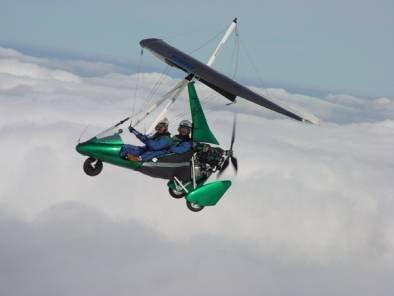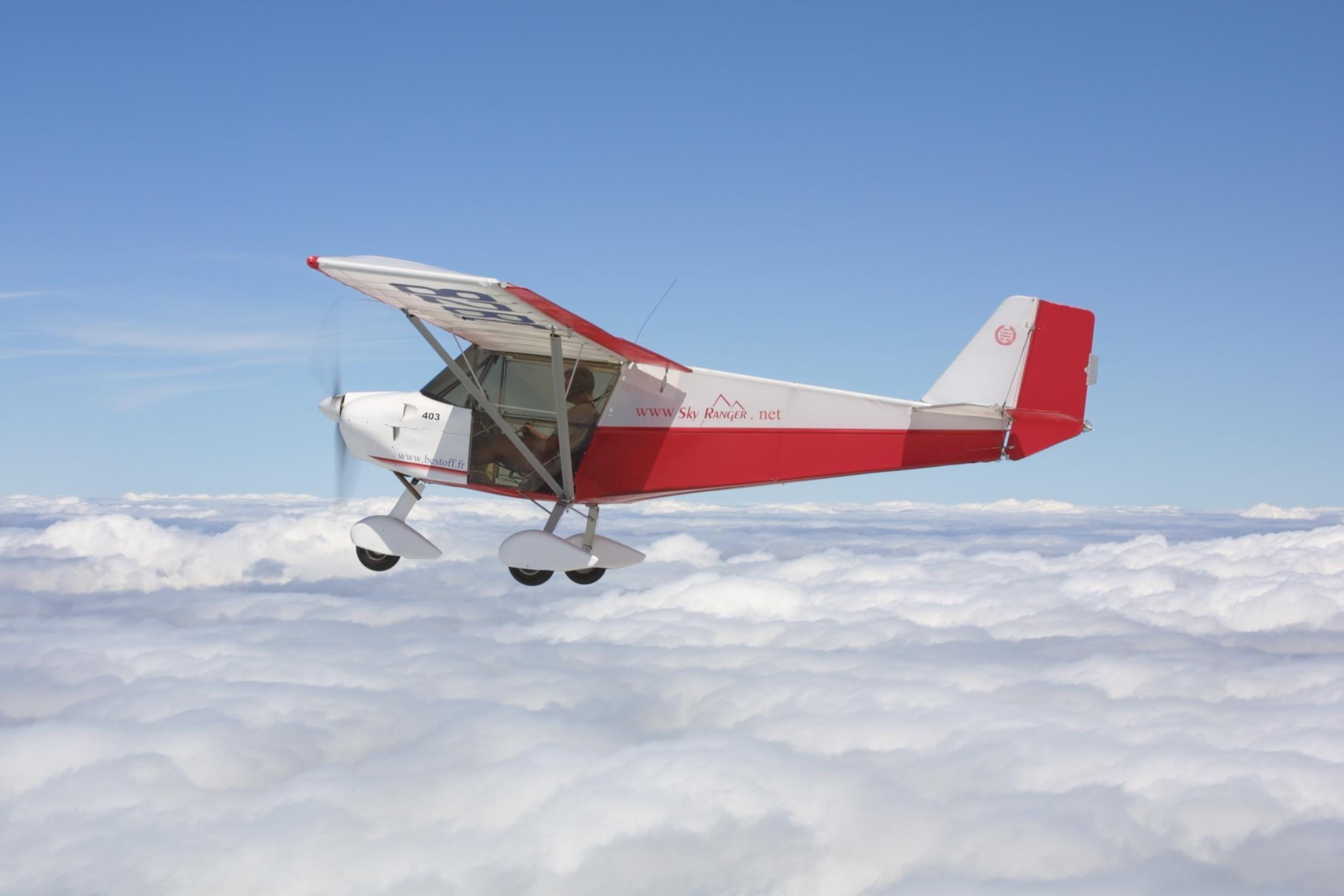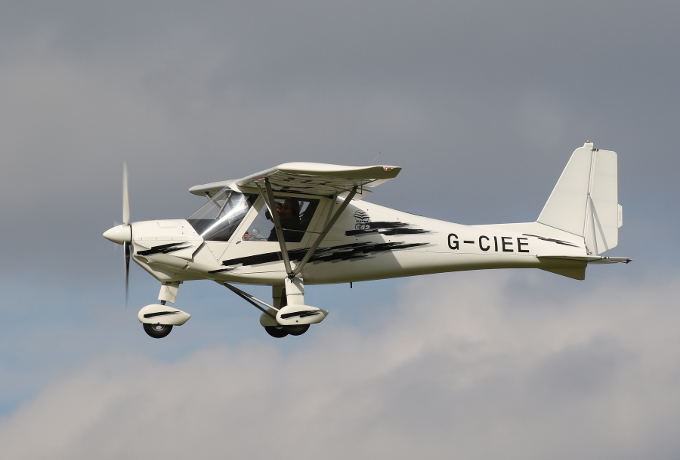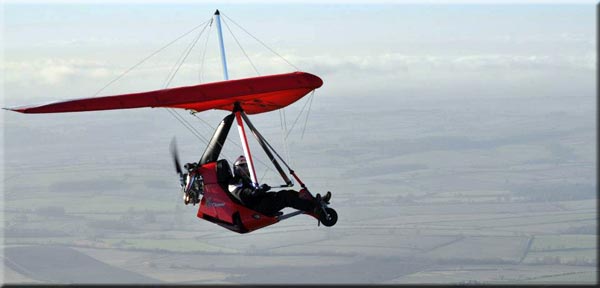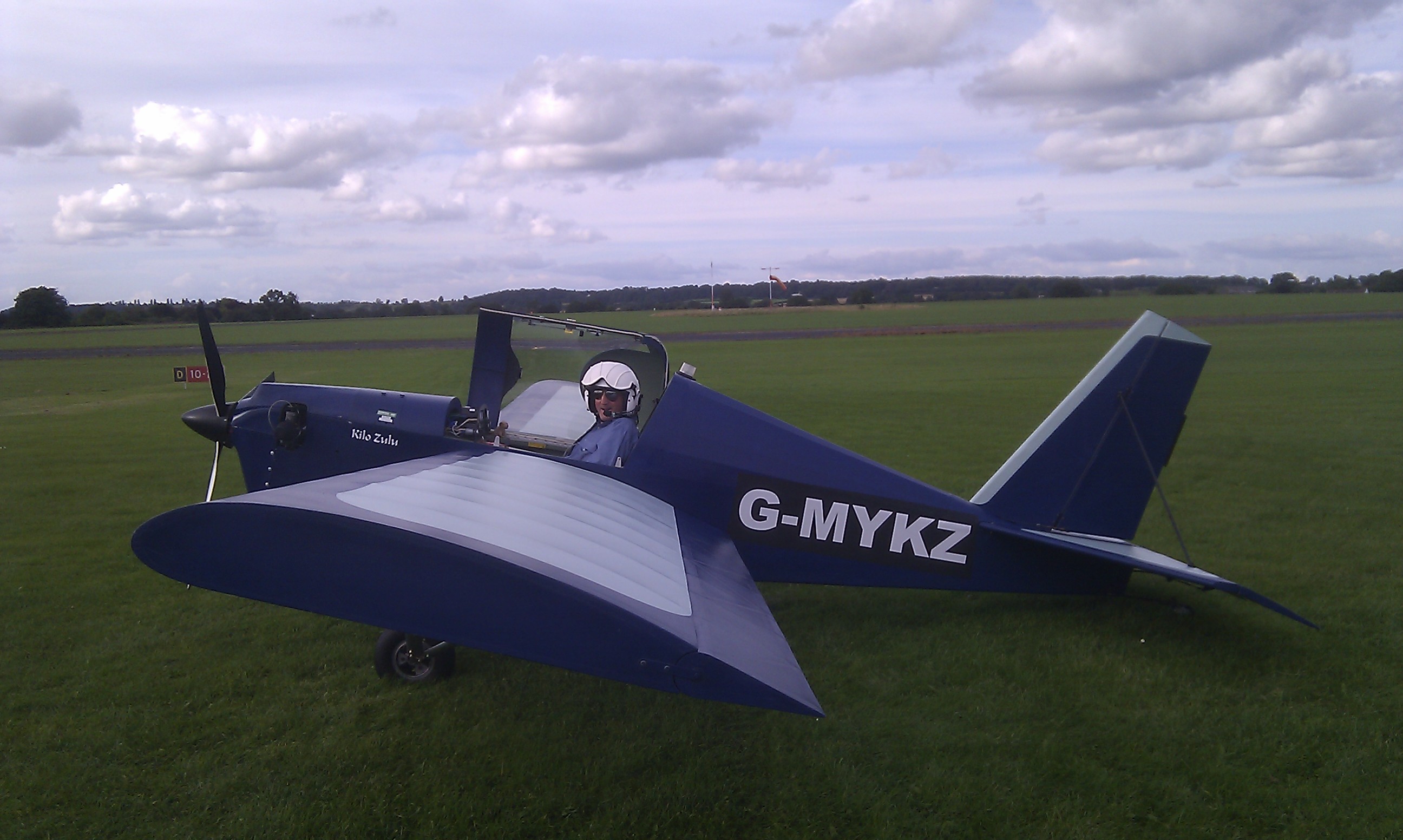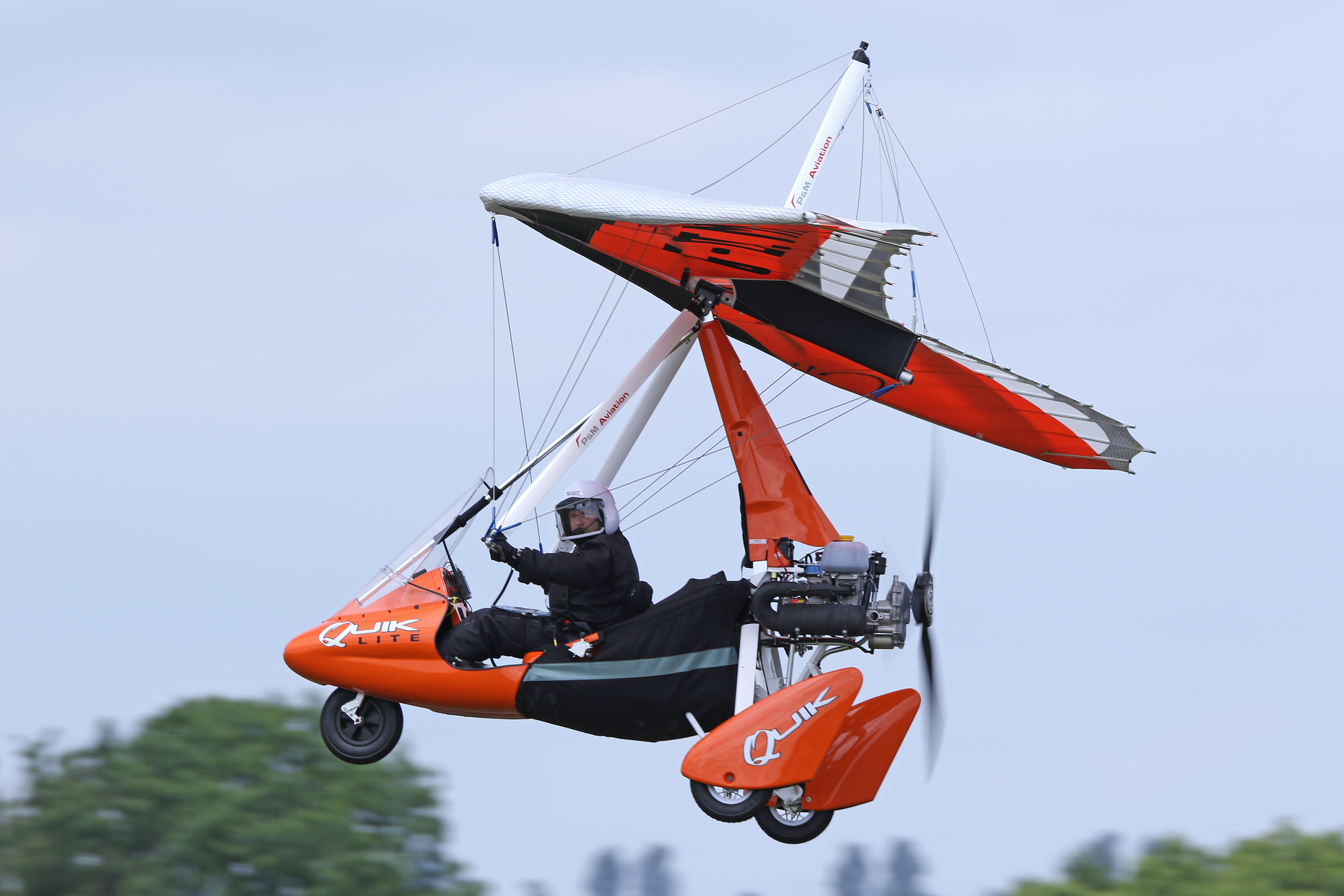Choose your passion...
Modern microlights essentially fall into two categories, the weight-shift or Flexwing and 3-Axis or fixed wing type of aircraft.
The Flexwing has a trike unit suspended under a wing evolved from the hang glider. Control is gained by using the control bar to shift the weight of the trike (i.e. the combined mass of the pod, engine and the occupants) relative to the wing. These are also known as trikes and are the most popular type of microlights. They are the motorbikes of the sky. The pilot sits in the front with the passenger tucked in close behind.
The 3-axis type of microlight or fixed wing looks like and in some cases will outperform a traditional light aircraft. Fixed Wing microlights are sometimes impossible to tell the difference from a traditional aircraft. Thanks to the rapid technical advances possible with the relatively light regulation required for microlights, the performance of the newer fixed-wing versions outstrips that of the traditional light aircraft you see at airfields. Most fixed-wing microlights are fully enclosed, though many of the older ones just have a windscreen. The majority you sit side-by-side, which is more sociable than tandem seating.
For most people, flexwings are the definitive microlights, with their hang glider-style wing which is flexible like a sail hence the name. You can get foot-launched flexwings, known as powered hang gliders, but most people choose wheeled versions. Microlights can use smaller fields, fly faster and cost less to buy and maintain. In fact, they are so good that many pilots of light aircraft are changing to microlights.
Both are covered by the basic definition: Microlight Definition: A microlight aeroplane is one designed to carry not more than two persons which has a Maximum Total Weight Authorised (MTWA) not exceeding: Can be a regulated or Deregulated (SSDR)
A microlight must also have a stalling speed at the maximum weight authorised not exceeding 35 knots / 41mph calibrated speed. Aircraft failing into the following definition can be classed as SSDR Single seat deregulated
All UK registered aeroplanes falling within these parameters are Microlight aeroplanes. Within this definition you can own and operate a regulated or deregulated microlight.
Regulated microlights require:
Deregulated microlights require:
